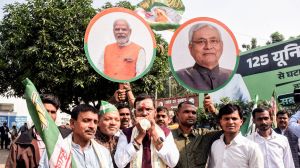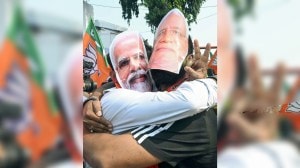Unravel the tariff tangle
Tariff plans of telecom companies are almost as complicated as life insurance plans — very difficult to unbundle and compare across pro...

Tariff plans of telecom companies are almost as complicated as life insurance plans — very difficult to unbundle and compare across products and companies. In fact, the multiplicity of plans and the inability of the average person to decode them has forced the telecom regulator Trai into putting some systems in place to help decode them.
The first thing the Telecom Regulatory Authority of India (Trai) has done is to amend existing provisions of the Telecommunication Tariff Order (TTO) that allow a service provider in a circle to offer up to 25 tariff plans to their consumers. The new order mandates that the tariff plan once offered shall be available for a minimum period of six months. In fact, the experts assigned to study this and other concerns came up with the finding that multiplicity of plans is not a problem. They were more worried about the lack of transparency in offering and implementing the tariffs by the service providers. They felt that the innovativeness displayed by service providers in offering tariff plans does not need to be curbed, but there should be transparency.
Given that the multiplicity of tariff plans is here to stay, a smart consumer should try to buckle down to understanding plans that work, depending upon usage and cost. You would need to answer questions like: Do you make more local calls than STD? Do you use SMS more than ISD? Do you call more in peak hours or at other times? This will put you on the right track to choosing the right plan.
The Trai website has put up the approved tariff plans of all the telecom players on its website. They identified the top five post-paid and pre-paid tariff plans (excluding promotional plans) on the basis of cost-effectiveness for each user profile, in this case medium users in Delhi and Mumbai (see tables). For purposes of the study, low budget users were categorised as L1, L2 and L3, medium as M1, M2 and M3, high as H1, H2 and H3, and very high as VH1, VH2 and VH3. The numbers attached to each category denote the following: 1 for ‘high local call users’, 2 for ‘high STD users’, and 3 for ‘users with high local calls to own network’.
So if you are a high STD user, and tend to use your cellphone moderately, you are in the M2 category. Here the five tariff plans identified by the experts as being most cost-effective in the post-paid category are — surprise, surprise — all MTNL, from the Cellular Plan A at an average cost of Rs 473 per month to the Garuda (Limited Mobility) — Plan B Silver at Rs 440 per month. MTNL does score on costs, but as for service, there are complaints all around about the lackadaisical approach.
If you are a very high user making mostly local calls, you fall in the category VH1 and if you are using a pre-paid card your most cost-effective plans are Airtel Pre-paid Friendz at Rs 3,306 per month, MTNL Cellular Trump Power at Rs 2,200 per month, Idea Chitchat (Mobile and STD pack) at Rs 3,300 per month.
However, one cannot just go by the tariff plans when deciding which package to opt for. Issues like service, billing, overworked networks and call drops may matter more to you than the cost. The initiative by Trai will help the smart shopper to work out the plans that work the best for them.
Use the friends’ network and the good old ‘word-of-mouth’ approach to find out which is good in terms of customer service, billing ease and network coverage.
‘Will somebody explain this plan to me?’
Have you been pushed to change over from a pre-paid to a post-paid tariff plan by your mobile operator? Their case may sound logical but the real reason may be that people tend to use a facility more when they know the bill will be presented only a month later and hence the rush to convert pre into post by the telecom companies. ‘Loyal’ customers are called up with offers to switch over at a low cost, but the journey may be painful.
A consumer might opt for the post-paid plan only to find that it was easier to buy a cash card whenever the last one expired – now he has to remember the last date for payment, write a cheque and also drop off it off in a drop box — a three-stage hassle in today’s fast-paced world. Other problems include delays in shifting your account from one plan to the other.
“I chose a pre-paid plan three years ago, and was happy with it,” says Kalpita Sarkar, a writer of children’s stories. “But after they persuaded me to switch to post-paid, I have had a terrible time.” Her monthly expenditure went up from Rs 450 (including ISD) to a minimum of Rs 1,000 a month. The drop-box cheques never seem to reach in time, and she has to re-issue them to include ‘late’ fee. If she wants to make ISD calls, she has to deposit Rs 10,000. All this while new customers are getting unlimited free calls to one number — a facility not extended to old, loyal customers. In fact, service providers’ disregard for loyalty seems to irk most customers — they feel that long-time users need to be treated better.
Another customer who shifted over from pre-paid to post-paid with a different company had to deal with a direct selling agent who took all the paperwork and money and disappeared. This customer had to call the company officials to get his plan migrated. He faced more trouble when he tried to use the STD facility — not only was he not told of an extra charge at the time of plan migration, it took a whole month for the company to make this change.
The problem is of agents who do not explain the entire package properly and choose to leave out the bits that may make a customer not choose the plan they are selling. Maybe, Trai will develop a code of conduct and get telecom companies to abide by it.


- 01
- 02
- 03
- 04
- 05





























